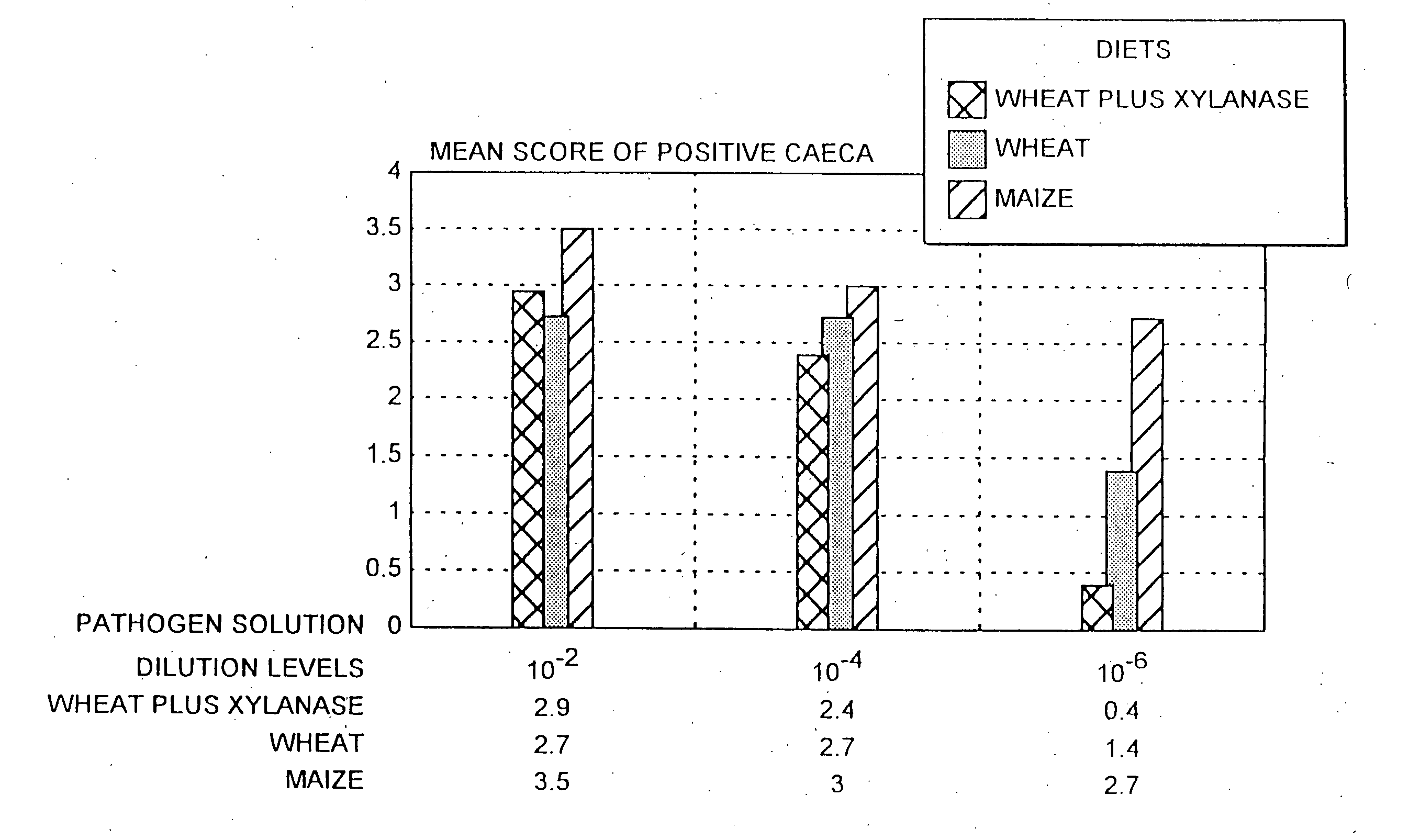Use of an enzyme for the manufacture of an agent for controlling bacterial infection
a technology of enzymes and bacterial infections, applied in the field of use, can solve the problems of loss of weight in the bird, inability to control the infection of the intestine, and inability to carry bacteria, etc., and achieve the effects of less harmful to the environment, less expensive, and improved immunity
- Summary
- Abstract
- Description
- Claims
- Application Information
AI Technical Summary
Benefits of technology
Problems solved by technology
Method used
Image
Examples
example 1
[0051]FIGS. 1-6 show the effect of the diets on Campylobacter colonisation in 12-day old chicks. In each case two flocks, A and B, were tested to minimise the effect of environmental variance on the results. In each case it is clearly evident that a wheat plus xylanase diet is effective in reducing the level of Campylobacter in the caecae of the chicks in comparison with a maize diet. Additionally, at Campylobacter stock solution dilution levels of 10−3 or lower (i.e. approaching more natural conditions), the wheat plus xylanase diet becomes considerably more effective than the wheat diet alone. Thus, in FIG. 1, for the wheat plus xylanase diet at a Campylobacter stock solution dilution of 10−6, a mean score of 0.5 positive caecae was observed. The equivalent scores for diets lacking xylanase were approximately 1.5 and 2.5.
example 2
[0052]FIGS. 7-9 demonstrate the effectiveness of the diets on Campylobacter colonisation of the small intestine and caecae of 17-day old chicks from two flocks. The effect of the wheat plus xylanase diet on reducing the Campylobacter colonisation of the caecae of the chicks is evident as already demonstrated in Example 1. However this reduction is even more marked as regards the small intestine. Accordingly, in FIG. 7 the mean count log10CFU in the small intestine measured for chicks on the wheat and xylanase diet was less than 4. The equivalent counts for the diets not containing xylanase were found to be approximately 6, i.e. 100-fold higher.
example 3
[0053]FIGS. 10-12 depict a comparison of the effect of different diets on the weight of 1, 5, 12, 19, 25 and 33-day old chicks. FIG. 10 shows the results for the wheat-based diet, FIG. 11 the results for the wheat plus xylanase-based diet and FIG. 12 the results for the maize-based diet. The weight of the chicks in each case is reduced by dosing with Campylobacter. However, those chicks to which Campylobacter has been introduced gain weight more quickly on the wheat plus xylanase diet than on either of the other diets.
PUM
| Property | Measurement | Unit |
|---|---|---|
| concentration | aaaaa | aaaaa |
| weight | aaaaa | aaaaa |
| time | aaaaa | aaaaa |
Abstract
Description
Claims
Application Information
 Login to View More
Login to View More - R&D
- Intellectual Property
- Life Sciences
- Materials
- Tech Scout
- Unparalleled Data Quality
- Higher Quality Content
- 60% Fewer Hallucinations
Browse by: Latest US Patents, China's latest patents, Technical Efficacy Thesaurus, Application Domain, Technology Topic, Popular Technical Reports.
© 2025 PatSnap. All rights reserved.Legal|Privacy policy|Modern Slavery Act Transparency Statement|Sitemap|About US| Contact US: help@patsnap.com



